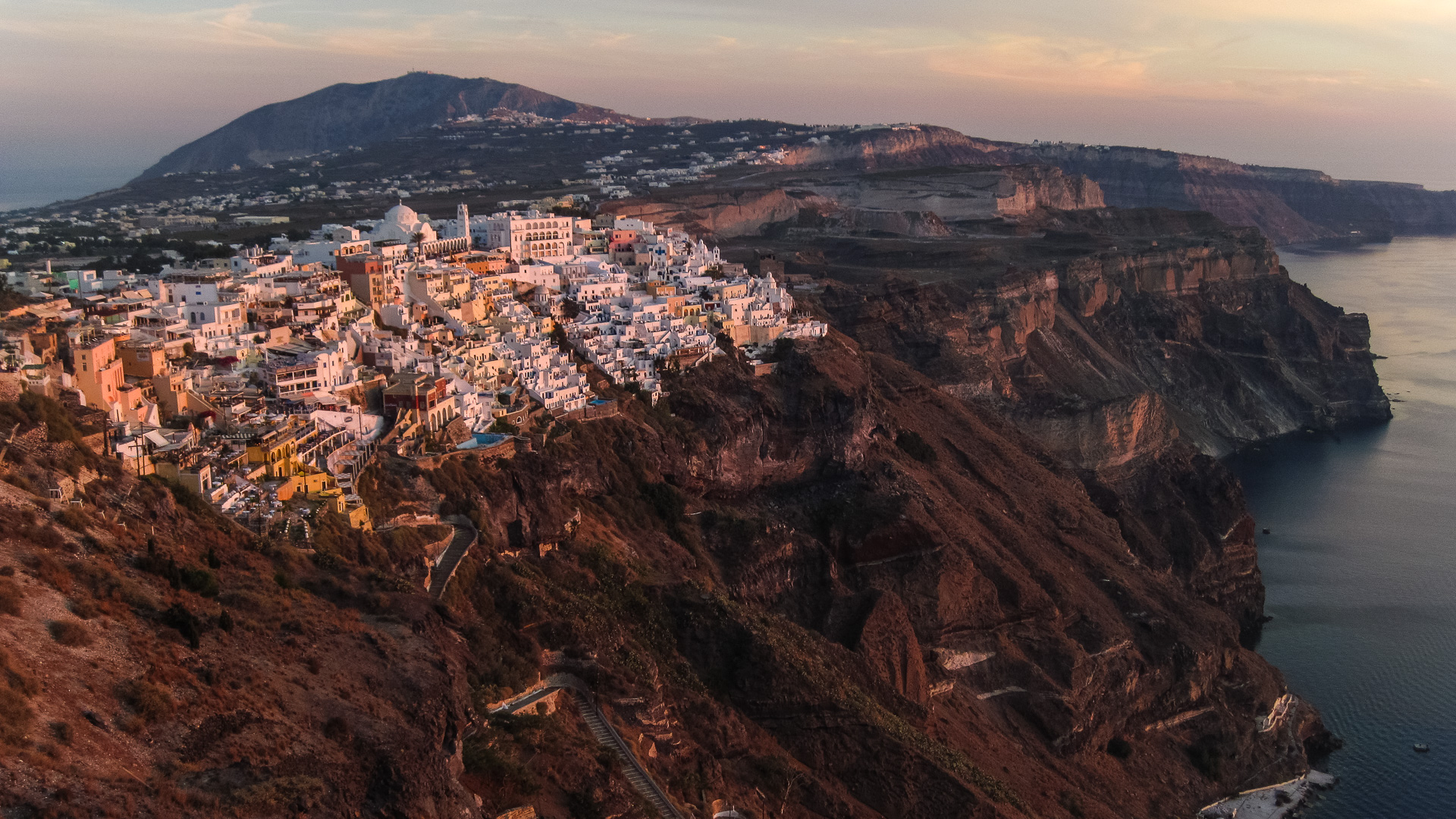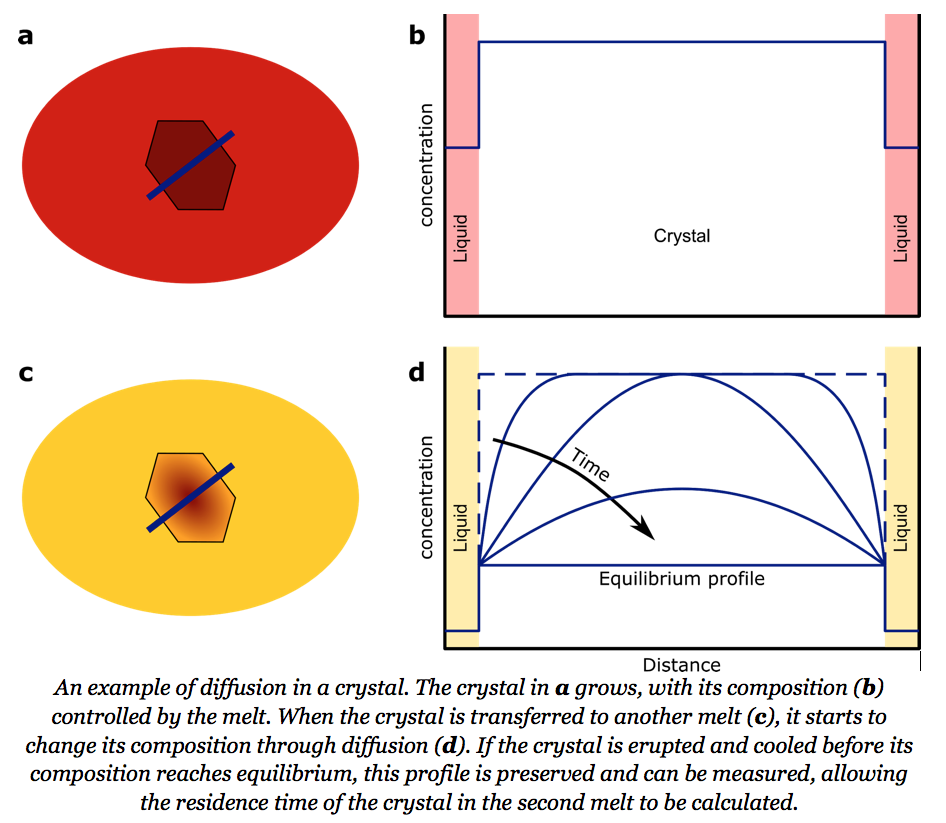
Some eruptions are so large, and discharge so much magma (molten rock), that the roof of the magma chamber can no longer support itself. When the roof collapses, it forms a big hole in the ground called a caldera. One such volcano is Santorini, in Greece, whose distinctive ring shape was formed by multiple caldera collapses.
We studied the Cape Riva eruption of Santorini, an eruption of at least 10 km3 of magma —enough to cover all of Singapore to a depth of at least 14 m. We wanted to know how long it takes to assemble the magma that eventually gets erupted at the surface in a caldera-forming eruption like the Cape Riva. Do these magma reservoirs slowly grow over tens of thousands of years, or are they emplaced more rapidly? Knowing what happens before such large eruptions would help volcano observatories to provide warning of an impending caldera-forming eruption.
In order to answer this question, first, we looked at crystals found in the deposits of the Cape Riva eruption, and those found in several lavas erupted in the 18,000 years leading up to this caldera-forming eruption. These crystals grew in the magma reservoir, and as they grew they recorded the processes that occurred there. We noticed that the crystals in the Cape Riva were subtly different from those in the the lavas, ruling out the idea that the lavas leaked out of a large, slowly growing magma reservoir. Otherwise, we would expect to see the same crystals in both the lavas and the Cape Riva magma. Most of the Cape Riva magma must have arrived in the shallow crust after the last lava was erupted, giving a maximum residence time of about 2,800 years.
Second, we used the crystals to get a more precise estimate of how long the magma resided in its shallow magma chamber, using a technique known as diffusion chronometry. When a crystal grows, its composition is controlled by the surrounding conditions such as the temperature, the pressure, and the composition of the melt (the liquid surrounding the crystals in the magma). If these conditions change, for example if the crystal gets transferred to a different melt, then the crystal is no longer in equilibrium. The crystal will try to adjust its composition to match the new conditions through diffusion, where different elements will diffuse into or out of the crystal. This takes time, so the longer the crystal sits at these new conditions, the further the elements can diffuse.
Importantly, the speed at which elements diffuse depends strongly on the temperature; the hotter the temperature the faster the diffusion. When the crystals get erupted at the surface, they cool and freeze the diffusing elements in place. We can then cut the crystals in half, and measure how far these elements have travelled, From that distance we can calculate how long the crystals resided at high temperatures. When we did this in our crystals from Santorini, we found that the crystals had not resided at high temperature in the shallow crust for longer than a few decades, Many crystals revealed timescales of only a few years or less: much less time than previously thought.

These results join a growing body of evidence showing that caldera-forming magma reservoirs are not long-lived and do not slowly grow until finally erupting. Instead, it appears that they form quickly, only shortly before eruption. Through monitoring signals that “restless” calderas provide, such as ground deformation or increased earthquake activity, we may be able to see this process happen. This could provide an important early warning for the next catastrophic eruption.